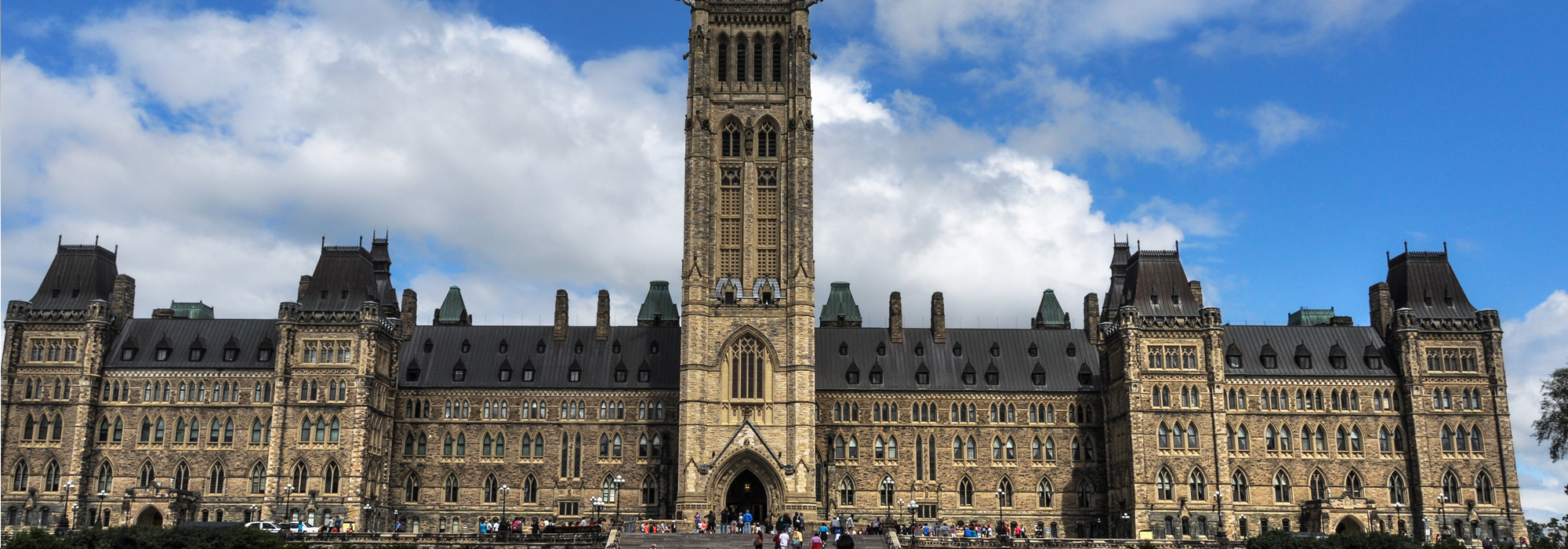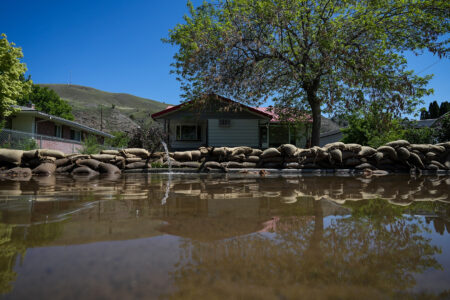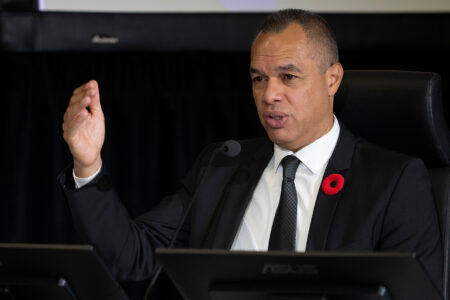
By the end of 2018, when the Christmas lights are twinkling around Parliament Hill, the doors to Centre Block will close for at least a decade of sorely needed rehabilitation. Many of us know we will never work inside that storied building again. You could get elected as an MP in 2019 and never have the privilege of working there, depending on your political lifespan.
Most people you talk to who have worked inside Centre Block revere the place. It’s difficult to be blasé about walking every day into a building that holds so much history and has been so important in the evolution of our democratic system.
Even though we (mostly) love this building, we’ve missed the forest for the trees on this looming project. There seems to have been precious little public or parliamentary scrutiny of what exactly is going to happen when the doors close and the renovation work begins.
This has been true of the media coverage around most of the long-term rehabilitation projects around Parliament Hill, which has centred around how much the project will cost and how long it will take. A review of Board of Internal Economy meetings and other parliamentary committees over several years suggests that parliamentarians have been mostly concerned with their impending displacement to other buildings and the design of the desks and chairs.
Parliamentarians don’t seem to have been asking the larger questions around what the overarching priorities should be for the Centre Block rehabilitation — not in any serious way — over the past two decades.
The more practical of these questions include, Will the building be made more accessible to the disabled? Will it will be more family- and woman-friendly and environmentally sustainable? Will current public and media access be protected?
And there are even more challenging questions, which I acknowledge might sound like heresy.
Do we even want the House of Commons to be configured the same way when the MPs get back? Has anyone ever considered whether other designs, such as the horseshoe shape used in Australia and Scotland, might work better?
I’ll return to this theme later, but the point is that no parliamentary or government body appears to have engaged in this larger conversation, even if just to reject the possibilities. Meanwhile, the public has been largely absent from the conversation — a curious fact in an age when governments are worried about alienating citizens.
A little Centre Block history
The current Centre Block dates back to 1922 (the Peace Tower was completed in 1927), after the original building burned to the ground in a fire in 1916. (John Geddes of Maclean’s Magazine summarizes the legacy of the architect, John Pearson, very elegantly here.)
But some of what is in the building is linked to a much, much older history. For example, the adversarial design of the House of Commons and Senate Chambers, where the opposition and the government face each other, has its origins in 16th-century England. Members sat facing each other in the church stalls of St. Stephen’s Chapel, which served as the House of Commons chamber.
In this configuration, “The Speaker’s chair was placed before the side of the altar, and the lectern in the middle of the choir gave way to the table on which the mace rested and at which the clerks sat,” as Harry Boardman wrote in his book The Glory of Parliament.
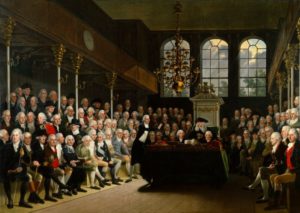
But even the British have gone through periods of doubt around whether their chamber should stay frozen in time.
Their House of Commons was severely damaged during the Second World War, and a debate ensued over whether it should be rebuilt in exactly the same way, altered or even moved to an entirely new location. Churchill recommended that the chamber stay the same — and even that it be kept small to foster a “sense of crowd and urgency.” This view was not shared by all.
“It may be better to have a circular House,” argued Viscountess Nancy Astor (Britain’s first woman MP). “I have often felt that it might be better if Ministers and ex-Ministers did not have to sit and look at each other, almost like dogs on a leash, and that controversy would not be so violent.”
In Canada, only two legislatures do not follow this Westminster form: those in Nunavut and Northwest Territories, where members sit in a circle, a nod to Indigenous consensus-building values.
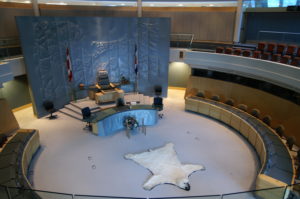
It surprised me to learn that there is not much creativity around the world when it comes to legislative chambers. The Dutch architecture firm XML set about documenting every single chamber in the world for their fat coffee-table book Parliament, and found that there are principally four styles. There’s the oppositional style, like the one we’re used to. Then there’s the horseshoe:
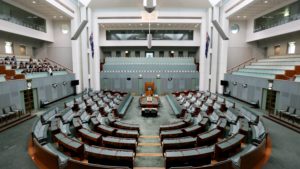
the theatre or classroom style where everyone faces the chair:

and the semicircle:
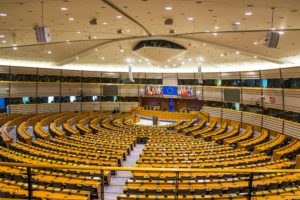
Finally, there is the much rarer circle form, which we have in Yellowknife and Iqaluit.
As David Mulder van der Vegt, one of the architects behind the book, said, “Even though the world has changed fundamentally, Parliaments still meet in a 19th century setting.”
Van der Vegt said that with the decrease in trust in democratic institutions, it’s a good time to reconsider architecture and experiment with new kinds of forms for gathering spaces.
Changing the form of legislative buildings “starts to question the status quo, which politicians tend to shy away from doing,” he said.
I have found no evidence that anyone on the Hill tossed around the notion of experimenting with a new format for the chambers when they move to their temporary locations in West Block (the members of the House of Commons) and the Government Conference Centre (the members of the Senate).
What we want from parliamentary buildings
I think we all know instinctively that space does have an impact on how we work and how we live. That is why we seek out houses with more light or balk at offices with low ceilings (my condolences to folks in the CBC Ottawa newsroom). We appreciate the huge open lawn in front of Parliament Hill that seems to say “WELCOME,” and “COME AND DO A DOWNWARD DOG HERE!”
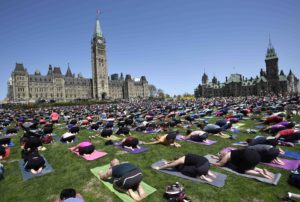
Public policy scholar John Parkinson, from the University of Warwick, has analyzed how the physical sites of democracy might impact political behaviour. He doesn’t place much stock in the seating design of the chamber making a big difference to how business is conducted, but he does believe the size of an assembly room matters. Too big, and you lose the intensity of debates, but too small, and you might marginalize some voices.
Perhaps more importantly, Parkinson underlines the importance of the accessibility of buildings for the public and for the media, noting that the lack of accessibility sends the symbolic message that the politicians themselves are inaccessible.
“Most assemblies do all they can to ensure that members are not aware of the galleries, protecting them from the public by lifting them up and out of eyeshot, smothering them with behavioural injunctions and, as a last resort, sealing them off behind glass partitions,” Parkinson wrote in his 2012 book Democracy and Public Space.
We might ask then, will the accessibility of the public and the media be protected in the new Centre Block? Will improvements be made to the public galleries? Will the space accorded to journalists, including the historic, purpose-built “hot room” where certain reporters work, be protected regardless of who is Speaker or who is in government during the rehabilitation? Will people re-enter the building in 10 to 15 years and possibly find that it has become more fortress-like?

In Canberra, Australian reporters who moved in to the new Parliament House in 1988 discovered that they had less daily interaction with politicians because of the physical location they each had been confined to. Everyone in the building had less hallway contact with ministers as their offices had been grouped in a separate wing.
Let’s talk after we gut the place
The plan, for now, is for crews to get inside the building and then to conduct an “investigative program” involving opening walls, ceilings and floors to get a picture of the condition of the place. Of course, since the building is a designated historic space, much will need to be protected.
When I put a series of questions this summer and fall to Public Services and Procurement Canada (PSPC), the official custodian of the parliamentary buildings, I was told that decisions on such things as the design of the Commons and the Senate, and what spaces will be set aside for the media, had not yet been made.
“The project is currently in the initial stages of schematic design and decisions regarding the Senate and House of Commons Chambers have not been taken,” said Michèle LaRose in an emailed response.
The mandate letter given to Public Services and Accessibility Minister Carla Qualtrough by the Prime Minister a year ago specified that the parliamentary precinct rehabilitation would not only meet but “exceed standards for accessibility, and environmental sustainability.”
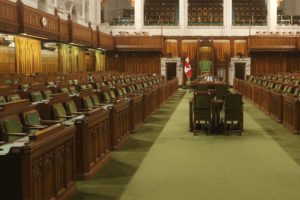
PSPC says its consulting closely with its parliamentary partners for guidance. But the last time that the House of Commons sent comprehensive, detailed direction on what they wanted for the parliamentary precinct was in 1999. The “Building the Future“ report states that one of its guiding principles is openness and accessibility, in order to “reinforce the idea of public access to Members of Parliament.”
Back in 1999, the Internet was still in the early stages of widespread use, so forget about Wi-Fi being a thing. Certainly no women were bringing their babies into the Commons to breastfeed. Change tables in the bathrooms were still a long way off. Transgender rights weren’t being widely discussed by legislators.
Since that 1999 report, direct instructions from Parliament have been more piecemeal. For example, the Standing Committee on Procedure and House Affairs this year recommended to the government that a family room be established in the future in the renovated Centre Block and that an outdoor play area be created nearby.
PSPC reports annually on its Long-Term Vision and Plan for the parliamentary precinct rehabilitation. The last time the plan was updated was 12 years ago, with approval by the Commons’ Board of Internal Economy.
Liberal MP Larry Bagnell, chair of the Procedure and House Affairs Committee, tried to rouse his colleagues to the problem of a lack of consultation over the Centre Block renovation, during a committee meeting in 2016. He noted that he didn’t recall having been asked for his opinion on the new design of the West Block chamber, even though he had been on Parliament Hill for 11 years by that point.
“As a bigger example, what if in the new Centre Block, they decide we’re not going to have any committee rooms because they want to do something else? A lot of us think this is a good place to have committee meetings, in Centre Block…,” Bagnell said, according to the meeting transcript.
“I don’t remember ever being consulted as a backbencher MP on these things, not to have any veto or anything, but at least to put in comments. It is our workplace.”
Who’s in charge exactly?
Part of the problem with the Parliament buildings’ rehabilitation is that there are so many cooks in the kitchen, and there is a confusing decision-making hierarchy. The players include PSPC, the Treasury Board Secretariat, cabinet, the National Capital Commission, the Library of Parliament, the Parliamentary Protective Service and, of course, the Commons and the Senate.
The Parliamentary Buildings Advisory Council, which was formed in 1999 and included parliamentarians and senior Hill administrators, a former speaker, a former auditor general, as well as external experts, was supposed to provide a long-term view and parliamentary oversight of the renovation program and advise the public services minister. (When it was first formed, MPs complained that it did not report directly to Parliament.) But the group fizzled out under the Harper government, and it has not been revived by the Trudeau team.
The Auditor General (AG) highlighted governance problems with the rehabilitation plan as far back as 1998. Again, in a report in 2010, the AG raised alarm bells, noting that the Senate and House of Commons have a say in certain parts of projects, but they “cannot fully participate in the final stages of government approvals and decisions.”
The AG underlined that PSPC is split between two potentially incompatible masters — the parliamentary partners and the decisions of Treasury Board: “On the one hand, consistent with its accountability to the government, the Department has to deliver projects within specific parameters. On the other, the Department is also committed to meeting requirements from the parliamentary partners that are not subject to government control.”
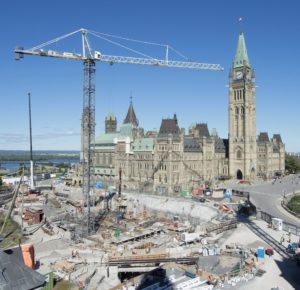
PSPC points to the existence of an “integrated project office,” which includes the PSPC project team, Senate and Commons representatives, and design and construction teams. Still, PSPC remains the custodian of the buildings, and the executive branch makes the final decisions.
What about the public and its input? PSPC said in its responses to my questions that “a public outreach strategy” will be developed.
In contrast with the Canadian process, the United Kingdom, in its ongoing restoration and renewal of the Palace of Westminster, which houses the parliament buildings, introduced a bill to establish separate statutory bodies that will be responsible for the project. The bill came out of a lengthy joint House of Commons/House of Lords committee process and report that includes dozens of intervenors.
The key oversight body, the Sponsor Board of the Restoration and Renewal of the Palace of Westminster, has been appointed in a sort of draft or “shadow” format, in anticipation of the bill’s passage. The board is led by corporate executive Elizabeth Peace, and includes parliamentarians from different parties, as well as outside figures who have worked on the London Olympics, the Buckingham Palace restoration and other major projects.
Underneath this Sponsor Board would be an independent, statutory Delivery Authority to manage the actual restoration program. It would not be led or staffed by civil servants.
Churchill famously said that “We shape our buildings, and afterwards our buildings shape us.” In the case of the Centre Block rehabilitation, and the larger restoration of the parliamentary precinct, we should wonder about who exactly is shaping our buildings for the future. I mean no disrespect for the fine people working in the public service, and the incredible craftspeople and architectural minds who come up with plans, but the more overarching questions about what we want from Parliament Hill should not rest with them or with a few cabinet ministers.
The time for turning our eyes to the project and thinking big thoughts should probably have been before the doors close for a decade or more. But we can still manage to shine a light inside, and good start might be to revive the Parliamentary Buildings Advisory Council and to start engaging meaningfully with the public on this project.
I would like to thank Professor Sylvia Shaw of the University of Westminster and University of Sheffield PhD candidate Alexandra Meakin for speaking to me about their research and helping broaden my understanding around this topic.
Photo: Shutterstock, by pikappa51.
Do you have something to say about the article you just read? Be part of the Policy Options discussion, and send in your own submission. Here is a link on how to do it. | Souhaitez-vous réagir à cet article ? Joignez-vous aux débats d’Options politiques et soumettez-nous votre texte en suivant ces directives.



